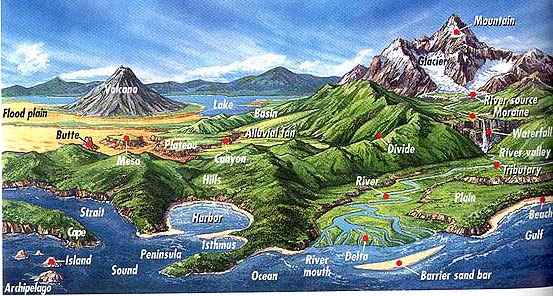 Source: Panorama of Landforms, NASA
Source: Panorama of Landforms, NASA
Before you learn about tectonic forces and their impact on earth, let's review some important information. First, we need to understand landforms. Landforms are the various features on the surface of the earth such as plains and plateaus; hills and valleys; and mountains and volcanoes. Review the image below to see more landforms.
 Source: Panorama of Landforms, NASA
Source: Panorama of Landforms, NASA
In this lesson, you will also study the factors that change these landforms called physical processes. Some landforms are created by the action of wind, water, and ice. These physical processes change the Earth's surface by carving and eroding land surfaces, carrying and depositing soil, sand, and other debris. Crustal movement and other tectonic activity inside Earth create landforms, such as mountains, faults, sinks, and volcanoes.